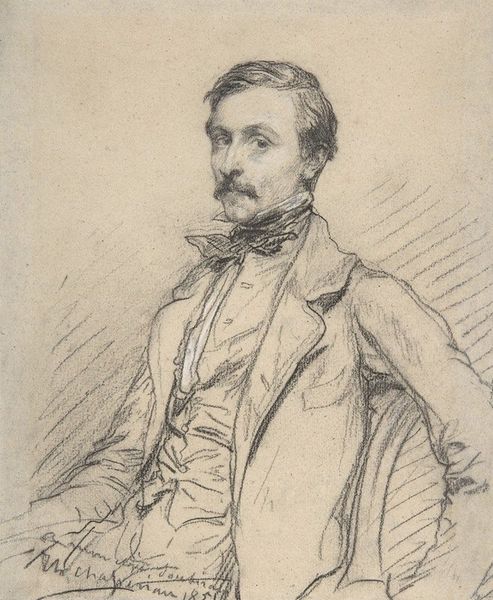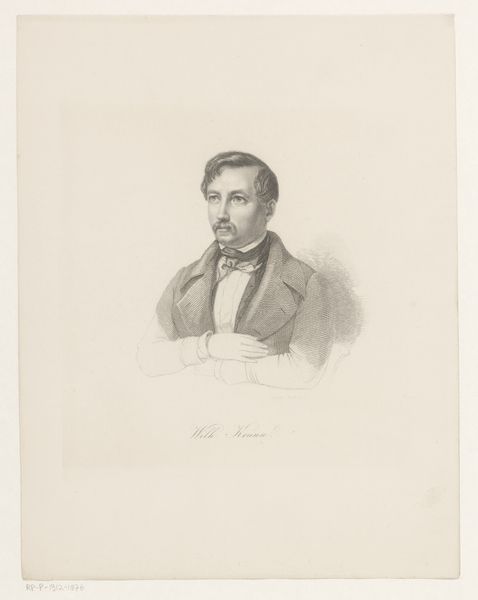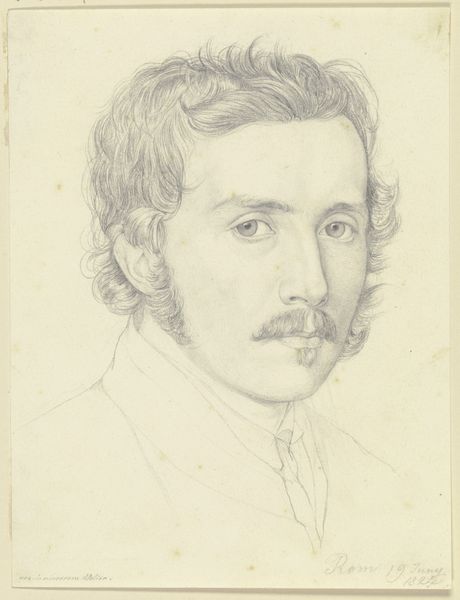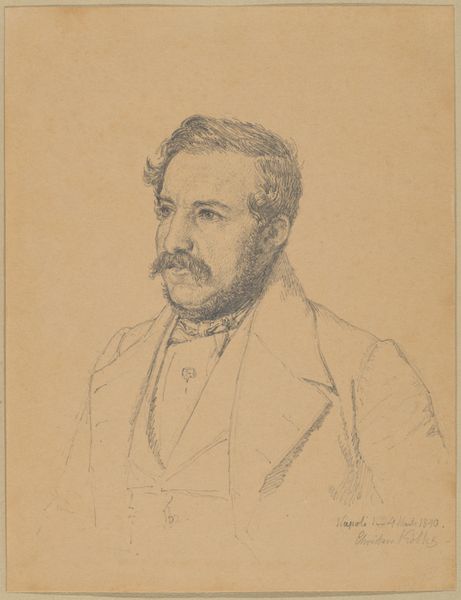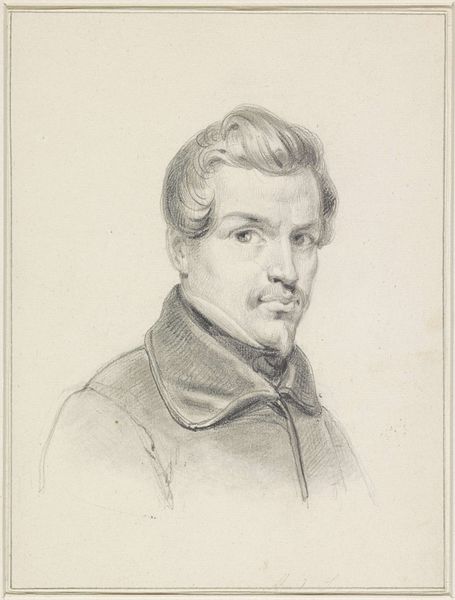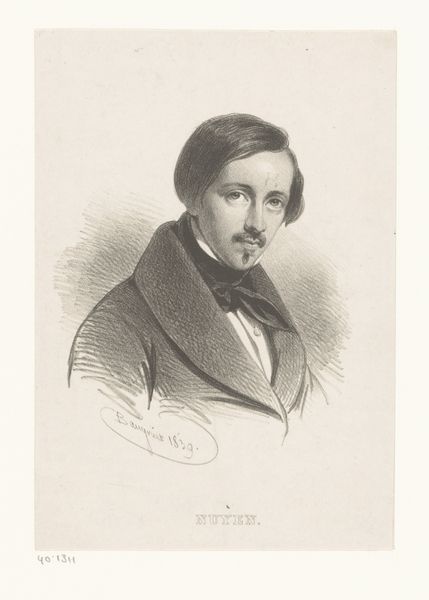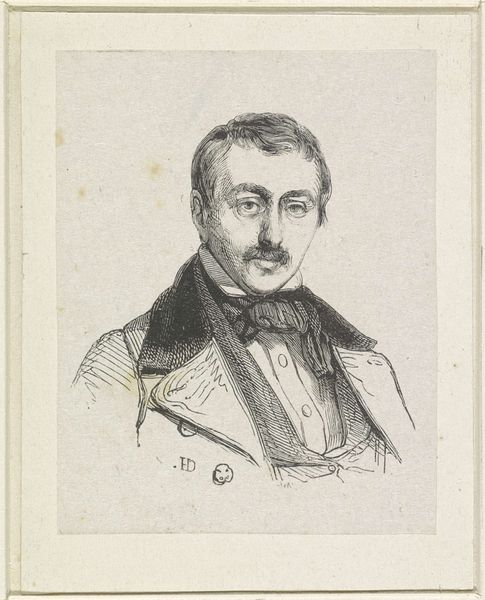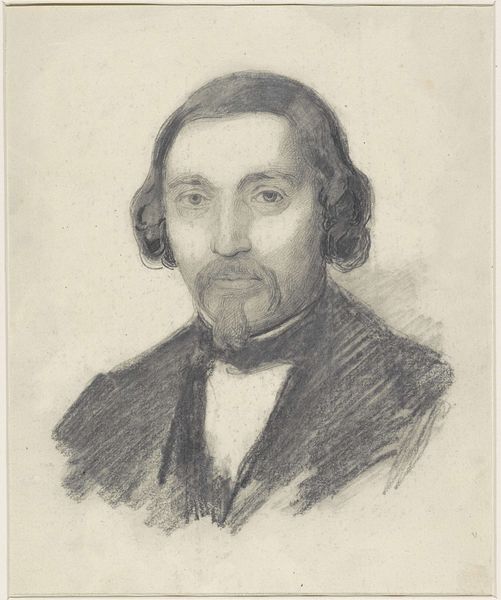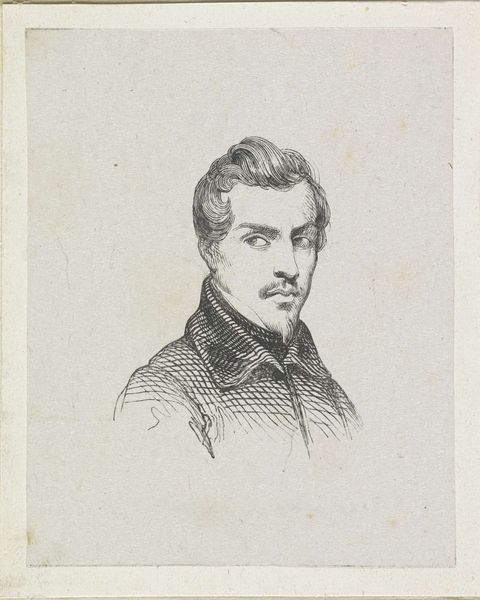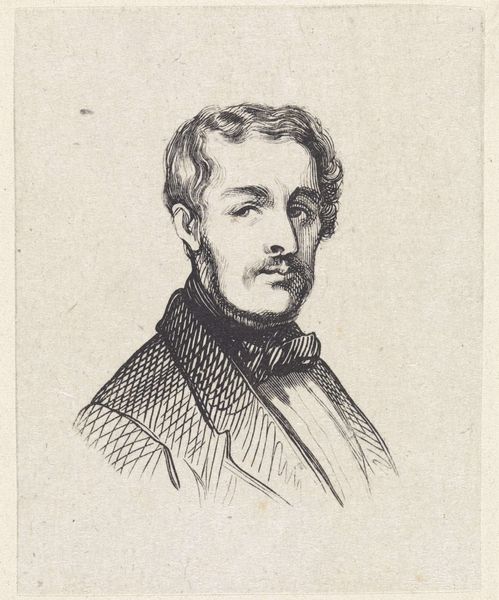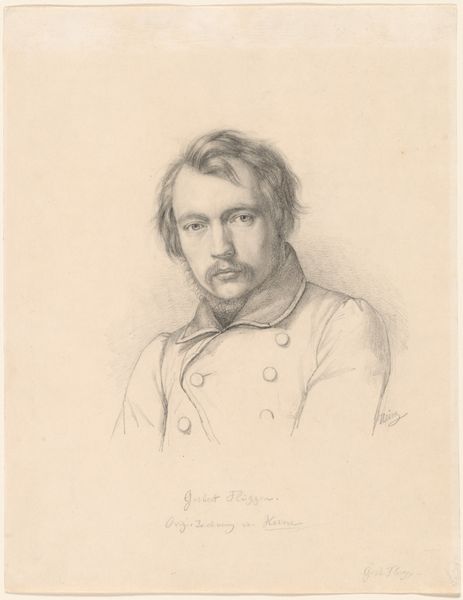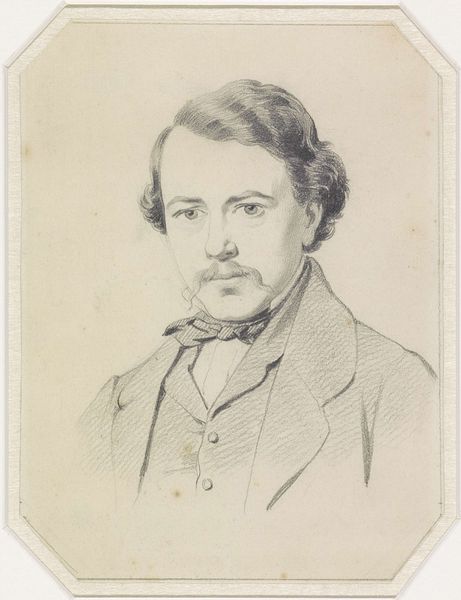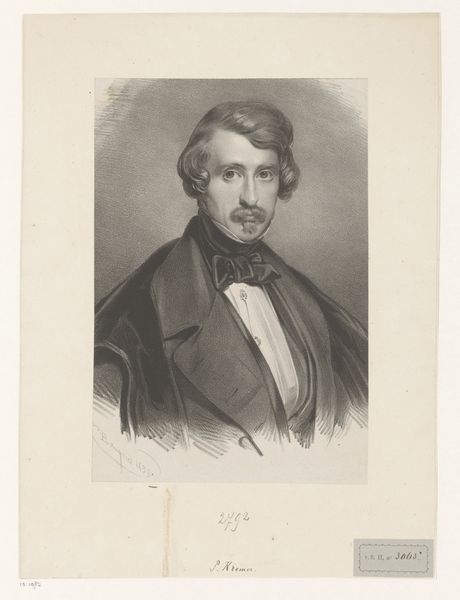
drawing, pencil
#
portrait
#
drawing
#
pencil drawing
#
romanticism
#
pencil
#
portrait drawing
Dimensions: height 147 mm, width 120 mm
Copyright: Rijks Museum: Open Domain
Curator: There's something immediately arresting about this pencil drawing. The sitter appears burdened, almost melancholic. Editor: Indeed. What we're looking at is Emanuel Noterman's "Portrait of Petrus Kremer," executed sometime between 1818 and 1863. The Romantic era saw a deep fascination with interiority. I think that resonates here. Curator: Absolutely. The shading emphasizes Kremer's eyes and brow. They seem heavy, as though weighed down by something. The pencil strokes aren't particularly polished; the style feels raw, immediate. Do you read any historical subtext into it? Editor: Well, portraits of this period often served as social currency, visual declarations of status and belonging. The subject is almost confrontational, meeting our gaze, even though it’s only a drawing. Considering its likely purpose, and given the period's social stratification, there's possibly commentary implied in his lack of adornment. Curator: That's a compelling angle. I’m more focused on what feels very introspective—almost pensive. The lack of embellishment you mentioned actually works to intensify this focus. Editor: I agree there's a psychological dimension that we can't ignore. Also, consider the artistic circles of that time and the political unrest that characterized the period, shaping perspectives on power, representation, and agency. Could Noterman be critiquing those in positions of privilege or portraying his weariness towards such conventions? Curator: It certainly opens up new avenues of interpretation. Even the choice of medium - the modest pencil - speaks volumes. Not grand oil paints, but something more intimate. A kind of private communion. Editor: Exactly. And when looking at this portrait as a marker within systems of power, consider that visual art acts as a tool for creating narratives and understanding perspectives within wider society. So, whose perspective matters, and who has access to artistic creation? Curator: It really allows for multiple points of view simultaneously. I appreciate how a seemingly straightforward portrait invites us to see individual sentiment within the historical circumstances. Editor: Precisely, acknowledging a nuanced picture of individuals shaped by the socio-political complexities that both liberate and confine. Curator: It is this layered understanding, in fact, that enriches and endears historical artwork. Editor: That helps us consider what remains important today and how those discussions carry through generations of visual culture.
Comments
No comments
Be the first to comment and join the conversation on the ultimate creative platform.

